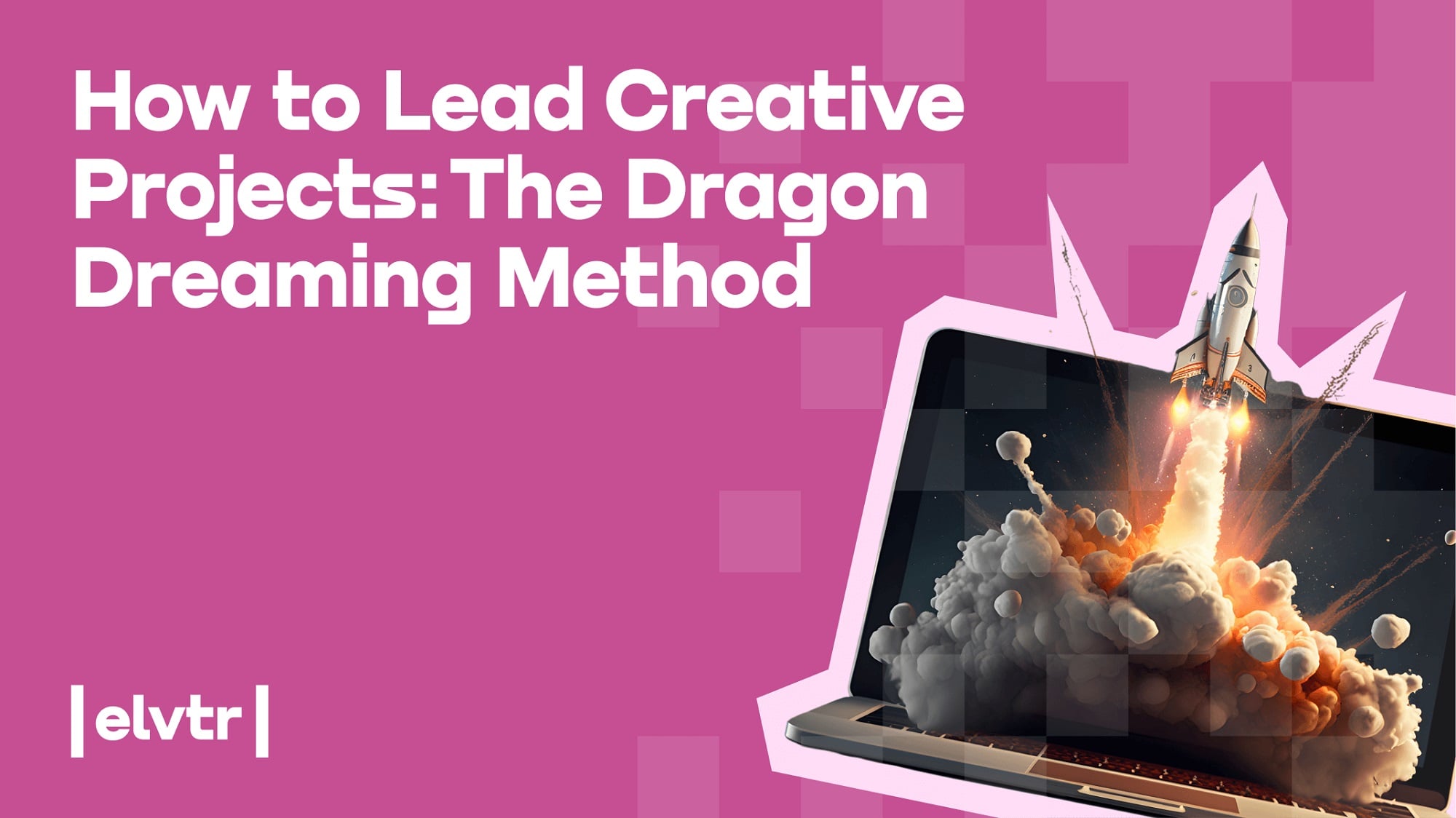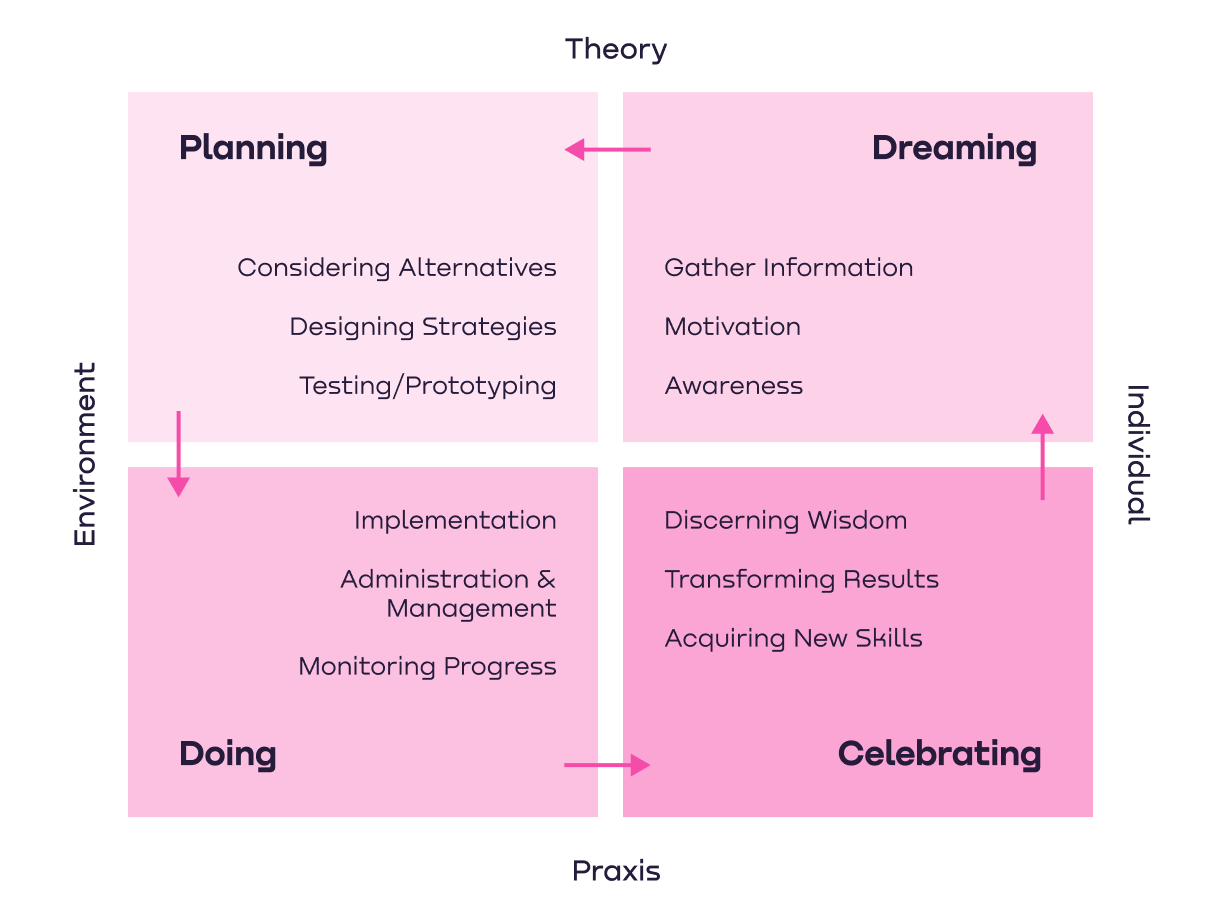- MAIN PAGE
- – elvtr magazine – HOW TO LEAD CREATIVE PROJECTS: THE DRAGON DREAMING METHOD
HOW TO LEAD CREATIVE PROJECTS: THE DRAGON DREAMING METHOD

Projects fail — all the time. According to IBM, only 40% of projects meet deadlines, financial and quality goals. Statistically, 70% of organisations have suffered at least one project failure in the prior year. And 50% of respondents indicated that their project failed to achieve what they planned.
We've highlighted the keys to making your project in the creative industry a success. Here is your guide on creating an atmosphere of freedom and inspiration in your company, and encouraging the creative team to deliver cool products.
How to Lead Creative Projects: 8 Basic Recommendations
Disney-Pixar's director Ed Catmull analysed two different approaches to conducting business:
- 'the Hollywood approach' invented by the American filmmaker George Lucas
- 'the technology approach' by Steve Jobs
As a result, he figured out the principles of teamwork that Pixar uses today. Here are the main points:
- Encourage employees to express themselves in all ways. To be successful at work, one might need to paste stickers on the table, and another — put a photo of a beloved cat at the office desk. You will get a more productive team if you allow your employees freely choose how to organise their workplace.
That is exactly why most Pixar animators don't work in standard cubicles. They spend their days working in castles made from stone or pink dollhouses where ceilings are either covered with miniature chandeliers or tiki huts made of real bamboo.
- Help employees to overcome the fear of making mistakes. Failures are an integral part of the learning curve, and making mistakes can help to create something innovative.
- Evaluate people’s problem-solving abilities, instead of praising them for not making any mistakes at all. The ability to make a fast root cause analysis and to find the solution to your problem says a lot about employees' professionalism.
- Allow employees to communicate freely with each other. Do not separate them from each other by departments and competencies. They might come across the best ideas for their projects, while chit/chatting over lunchtime, rather than during a formal brainstorm with the senior management.
- Hire the best of the best talents, even if there is a risk of them competing with you. A strong team will produce excellent results and can help a manager, director, or CEO to remain in good business shape and continue growth and development.
- Don't run away from crises. This is a good opportunity to test and identify the company's resilience and values. It can also unify employees: people often unite against a problem they have to face.
- Encourage employees to share constructive feedback. Provide employees with an opportunity to exchange their views and stances freely.
The Dragon Dreaming Method: Focus On Celebrating the Dreams You've Achieved, And Let Mistakes Go
The Dragon Dreaming method was developed by John Croft, an expert in organizational development. According to Croft, Dragons represent our fears, insecurities, and people with whom we struggle to communicate.
Leaving our comfort zone, we "tame our dragons" — gain new skills, achieve life and business goals, overcome difficulties and maintain an interest in projects we are involved in. The Dragon Dreaming Method allows teams to build a strong vision (dreaming), turn it into objectives (planning) and actions (doing), and praise the success to move on (celebrating).
In the prologue of the book "Dragon Dreaming in Action", the author underlines that 90% of projects fail to deliver their objectives. That is why this methodology was called for — to break this pattern.
So, how to lead projects according to the Dragon Dreaming method:
#1. Dreaming
According to the concept, every project starts with a dream. For example, you are promoting mattresses and came up with the idea of how to visualise dreams through a neural network and smartwatch data. In this case, the uncertainty will become your “dragon”. And so you will start questioning your design, and pondering whether this project is smart enough; or asking yourself whether it is achievable.
Interesting to know: It is estimated that 90% of ideas get blocked during this dreaming stage. Lack of courage, fear of failure, procrastination, lack of confidence, panic zone, and many other insecurities refrain you from taking the first step.
#2. Planning
At this stage, the achievement of the dream is divided into a few steps:
- Define tasks. To do this, you have to answer the following questions: "What exactly needs to be done to make a dream come true?" and "Which tasks should you prioritise?"
- Create a project goal. According to the Dragon Dreaming method, a project goal should be concise, comprehensive, memorable, inspiring, and formulated once the tasks are defined.
- Create Karabirrdt. This is a project board, which helps to divide tasks into smaller projects among a team, or assigned to one person only. Karabirrdt will come in handy while strategising, evaluating the available resources, and setting deadlines.
- Delegate tasks and responsibilities. According to the Dragon Dreaming method, the person responsible for the project’s delivery should be the one who is the most inspired by the task.
#3. Doing
It is easy to get off track during the implementation phase. Moreover, most business ideas fail to last longer than three years. This often happens due to a lack of scalability possibilities, effective planning, or founder’s burnout.
It is important to keep track of progress, and an eye on the timeline and budget expenditures. On top of that, it is crucial to estimate how external circumstances might affect the project’s implementation, know how your team is progressing, and regularly check whether you are moving toward your dream results.
How to make sure your project is on the right track? Review tasks weekly by answering these questions:
- What did you hope to achieve last week? Have you achieved it?
- What new tasks are you going to finish by next week?
- Who needs to be involved in that? Who else could be interested in working with you on these tasks?
- How are you going to involve those stakeholders you need the most?
- What resources do you need to complete the task?
- What is the best way to find these resources?
- When is the deadline?
- When should the results of your work be delivered?
#4. Celebrating & Evaluating
If you don't take time to stop and reflect on what has been done, how will you make better plans for the future? Celebrating and evaluating are the main features of the Dragon Dreaming method.
"Celebration" does not mean you need to throw a party after the project's completion. It is rather a moment when you reflect and express gratitude. Celebrating small and big victories alongside failures fails is a vital experience to go through. More importantly, it is crucial to discuss all the ups and downs of the accomplished project with the team and reflect together on the lessons learned.
How to Give Valuable and Constructive Employee Feedback in the Creative Industry
Sometimes it might be easier to offend a designer than a manager in an IT company. Creative people express themselves by creating different content and objects, and so they enjoy when their efforts and authorship is recognised. So the moment you criticise the author, their identity immediately collapses. Therefore, it is important to provide creative people with feedback in a specific way.
Spoiler: the Sandwich Technique doesn't always work.
Managers often stick to the sandwich technique which is split into a few stages. At first, they praise someone’s work, then they provide some criticism, and finally, they highlight the positive outcomes again. In fact, this technique forces you to sugarcoat. You do not focus on mistakes and weaknesses because it's unpleasant to talk about them.
We've put together some effective techniques and tips to help you with providing balanced but constructive feedback to your creative team.
#1. Criticism of the Results, Not Personal Competencies
Feedback should not mention any employee's personal qualities and traits. For example, "you are such a slow performer, and you also make mistakes all the time, and do not think strategically!"
It is better to discuss a specific result instead. For instance, "your superpower is creative thinking, and you come up with unique solutions. However, the last task was not fully delivered, and it feels like you have not made a thorough analysis. Maybe you didn't have enough time to dive into the subject, and work through everything?" Such feedback will likely be perceived as an opportunity to change something.
#2. Opening Technique
There are situations when you realise at the very onset that the idea is bad, or, at the very least, you need to improve it. The Opening Technique can help you. Here is how it works — the manager does not cast a light on your mistakes but instead motivates employees to give feedback about their work.
To apply the technique, ask your colleague who failed to deliver the project to answer these questions:
- What went wrong in the project?
- What do you consider a weak point here?
- What risks do you see in this decision?
- What needs to be changed?
#3. Balance Technique
The Balance Technique helps the team objectively evaluate the decision and see its positive and negative sides.
To implement this, your team should answer the following questions:
- Can you name three points that will make the project popular?
- Can you name three weak points that can cause its failure?
- Can you name three points that you will do the same way while working on this project once again?
- Can you name three things you will never do again?
#4. Ambition Game Technique
You need to figure out what drives the creator. Do they want their project to be noticed by journalists and bloggers? Or do they seek rewards, such as the Cannes Lions Award or an Oscar? Let's imagine that you need to give feedback to a copywriter who brought a lousy video script. What would you say?
Here's how to understand creative people’s motivation and inspire them to improve the idea, while not killing their motivation:
- What did you lack to make the video viral so that everyone would ‘like and share’ it?
- Which approach would you use next time so you could get the Cannes Lions Award?
If a person adequately evaluates their own capabilities, understands the context, and has a thorough knowledge of the subject, they will be able to answer these questions.
Do not forget to mention the positive aspects of your employees' work. If you like the decision or feel sincere pride in your team, tell them about it immediately. Don't wait for the right moment or annual performance review to acknowledge and celebrate their achievement.
*ELVTR is disrupting education by putting proven industry leaders in a virtual classroom with eager rising stars. ELVTR courses offer 100% instructor driven content designed to give you practical knowledge within a convenient time frame. Choose the right course for you!


